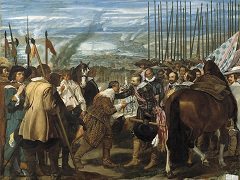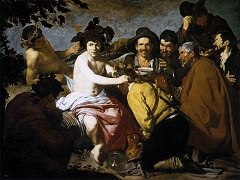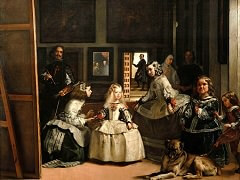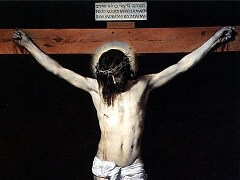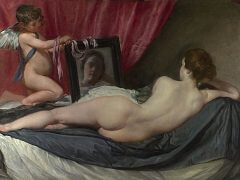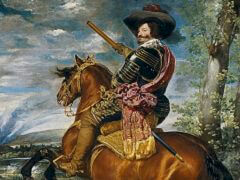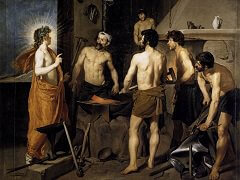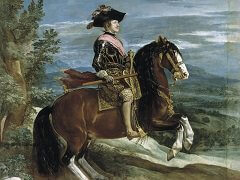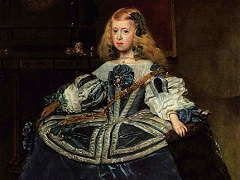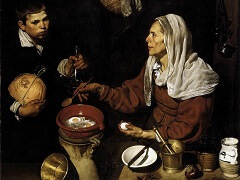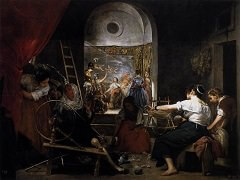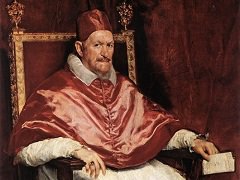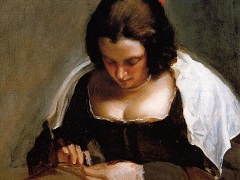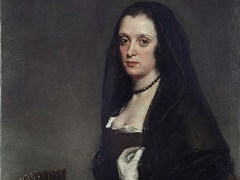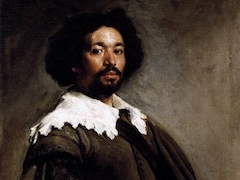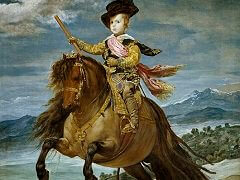The Virgin Presenting the Chasuble to Saint Ildephonsus, 1623 by Diego Velázquez
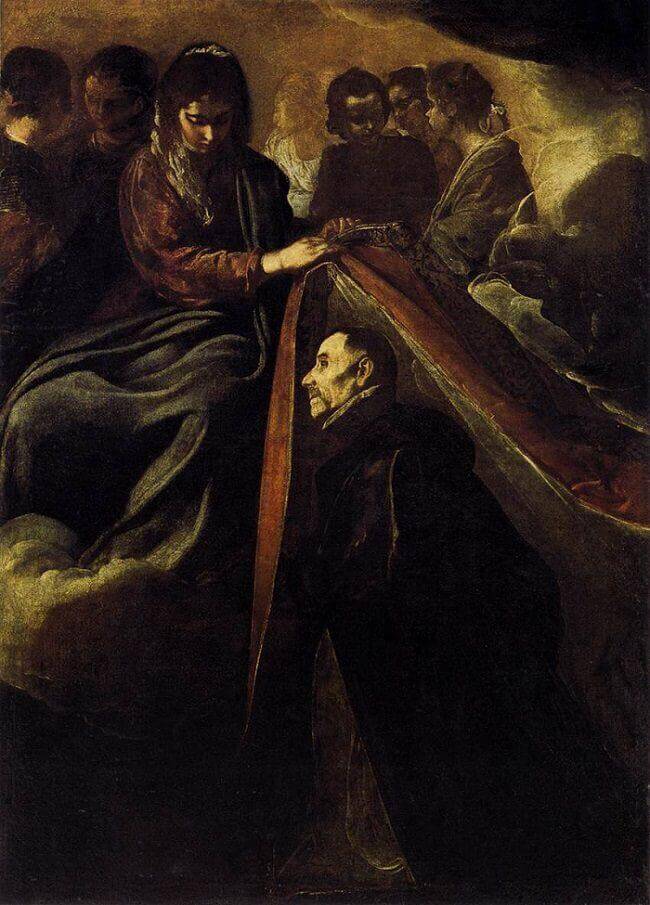
This painting dates from 1623, according to most art historians. There is a tendency to categorize Velázquez exclusively as a portraitist, but, in any case, it is an incorrect assumption to regard his religious compositions - more numerous than one might think - as of only minor importance, lacking in the degree of religious feeling and mysticism that characterizes the work of his predecessors, his contemporaries, and his followers. In our opinion, this belief is unfounded. The majority of Velázquez's religious paintings, though they seem, on the surface, infused with the fascinating reality of ordinary folk, are nevertheless filled with a deep religious feeling that transcends this realism. Like his fellow Spaniards, he would not have been able to escape these two major tendencies. Thus he explored a theme that was especially meaningful to many Spanish artists (notably Francisco Goya, El Greco, Murillo, and Juan de Valdes-Leal) and that Peter Paul Rubens himself had painted after his second trip to Spain in 1628 - the handing over, or rather the presentation of the chasuble to Saint Ildephonsus. Saint Ildephonsus was born in Toledo in 607 (and died there in 667). He succeeded his uncle, Eugenius II, as Archbishop of Toledo, in 657. The author of numerous works in Latin, Saint Ildephonsus, whose feast day is January 23, is still among the most popular saints in Spain. One day he had a vision that the Virgin Mary, recognizing him, placed upon him a holy chasuble.
As with other earlier paintings by Velázquez, it has been suggested that the Virgin Mary's features are those of Juana Pacheco, while the angels are thought to be portraits of several young women of Seville. In spite of the deteriorated condition of this painting, Aureliano de Beruete positively identified the work as a genuine Velázquez in his 1898 monograph on the artist. Cleaning and restoration in i960 enhanced the value of the canvas and, a certain amount of damage notwithstanding, revealed once again its true quality. In his 1969 book, Pietro Maria Bardi points out that Palomino had already detected in Velázquez's work the triangular arrangements of El Greco, and that Jose Camon Aznar sees ties to Caravagio.

